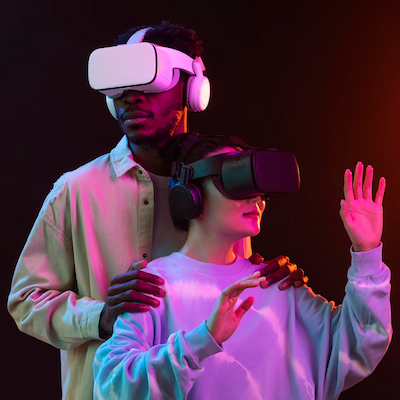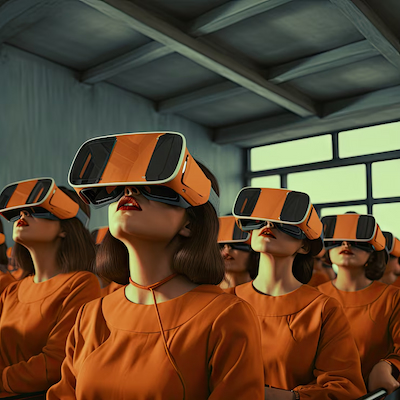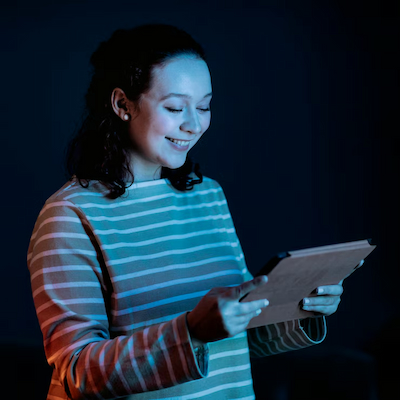
In recent years, technology has played a fundamental role in transforming live and hybrid performances. With the advancement of digital tools and increasing internet connectivity, artists and producers have the opportunity to explore new ways of interacting with their audiences. Live performances, once limited to a physical space, can now reach global audiences, creating more engaging and dynamic experiences.
The COVID-19 pandemic accelerated this transformation, forcing many artists to adapt to new realities and implement technological solutions to maintain connections with their fans. Hybrid performances, which combine in-person and virtual elements, emerged as a viable alternative, allowing events to continue even in times of restriction. This new approach not only expanded the reach of performances but also raised questions about human interaction, audience experience, and the future of live art.
How Hybrid Performances and Live Technology Work
Hybrid performances are a combination of live and virtual experiences, where artists perform for a physical audience while simultaneously streaming the event online to viewers around the world. This format allows performances to be accessible to a much broader audience than would be possible in a single venue. To make this work, a robust set of technologies is required, including high-definition cameras, advanced sound systems, and reliable streaming platforms.
Streaming technology plays a key role in delivering hybrid performances. Platforms like YouTube, Twitch, and Facebook Live allow artists to broadcast their shows in real time, interacting with audiences through live chats and comments. This creates a sense of closeness, even when viewers are physically distant. Additionally, the use of augmented reality (AR) and virtual reality (VR) can enhance the viewer’s experience, making them feel part of the event even from their homes.
Another important aspect of hybrid performances is the integration of interactive technologies. Apps and digital platforms can be used to allow viewers to actively participate in the event by asking questions, voting in polls, or even influencing the content of the performance in real time. This interactivity not only increases audience engagement but also gives artists the chance to adapt their performances based on immediate viewer feedback.
Finally, data collection and analysis play a vital role in optimizing hybrid performances. With analytical tools, organizers can better understand audience behavior and adjust their marketing and content strategies accordingly. This data-driven approach allows artists and producers to continually improve their presentations and meet audience expectations and preferences more effectively.

Advantages of Integrating Technology in Live and Hybrid Performances
Integrating technology into live and hybrid performances brings a range of benefits that can transform the experience for both artists and audiences. One of the main advantages is the increased reach. With the ability to stream live performances online, artists can reach fans across the globe who might otherwise never have the opportunity to attend the event. This not only expands the fanbase but also boosts revenue from ticket sales and merchandise.
Another advantage is the potential to create more immersive and engaging experiences. Technology allows artists to incorporate visual elements such as projections, dynamic lighting, and special effects that enhance the show. Interactive features like live polls and chats enable the audience to participate actively in the event, making it more memorable. This sense of immersion can create a stronger emotional bond between artists and their fans, which is essential for long-term success.
The flexibility that technology offers is also a major benefit. With the ability to adapt content and formats in real time, artists can quickly respond to feedback and changing circumstances. For example, if a performance is not resonating well with the audience, the artist can adjust the setlist or performance style to better meet expectations. This adaptability is a powerful asset in an ever-evolving entertainment landscape.
Lastly, using technology in hybrid performances can lead to lower operational costs in the long run. While the initial investment in equipment and streaming platforms may be high, the ability to reach a larger audience and reduce costs associated with physical events can balance out expenses. Additionally, virtual performances can provide an extra revenue stream, allowing artists to diversify their offerings and remain financially sustainable.
How the Presence of Technology Transforms Events
The presence of technology in live and hybrid performances transforms events in multiple ways, creating new opportunities and challenges. First, technology allows for unprecedented personalization of the audience experience. By using demographic and behavioral data, organizers can segment their audiences and offer tailored content that aligns with their preferences. This results in more relevant and impactful events that resonate more strongly with spectators.
-
Streaming technology enables global broadcasting of events, increasing audience reach.
-
Interactivity is enhanced through apps that let audiences engage directly during the performance.
-
Analytical tools help organizers understand audience behavior and optimize performances.
-
Augmented and virtual reality enrich the experience, making it more immersive.
-
Real-time adaptability allows for changes during the performance based on audience feedback.
-
Virtual events reduce operational costs and diversify revenue sources.
These transformations not only change how events are conceived and executed but also reshape the dynamic between artists and audiences. Real-time interaction and the ability to personalize experiences allow artists to build deeper relationships with their fans, creating communities around their work. Furthermore, the presence of technology can democratize access to art and culture, enabling people from different backgrounds and locations to participate in events that were once restricted to physical spaces.
Finally, the presence of technology in live and hybrid performances also raises questions about the future of the entertainment industry. As more artists and organizers adopt these approaches, we are likely to see evolving audience expectations regarding live event experiences. This could lead to greater innovation and creativity as artists seek new ways to stand out in an increasingly competitive market.

Did You Enjoy Learning About the Presence of Technology in Live and Hybrid Performances?
Frequently Asked Questions
How does technology enhance live and hybrid performances?
The presence of technology in live and hybrid performances brings incredible sound and stunning visuals. It makes you feel more connected to the art.
What tech tools are used in live performances?
Artists use microphones, LEDs, projectors, and mixing software. These tools help create unforgettable experiences.
Can technology replace performers in shows?
No, the presence of technology in live and hybrid performances complements the artists. Human artistry is unique and irreplaceable.
What are hybrid performances?
Hybrid performances combine live shows with online streaming. This way, you can enjoy the best of both worlds!
Does technology affect the audience experience?
Yes! The presence of technology in live and hybrid performances makes everything more dynamic and immersive. You’ll love it!
What are the challenges of using technology in live and hybrid performances?
Some challenges include technical failures, internet connectivity issues, high production costs, and the need for specialized skills. Balancing technology with artistic authenticity is also essential to maintain audience connection.

